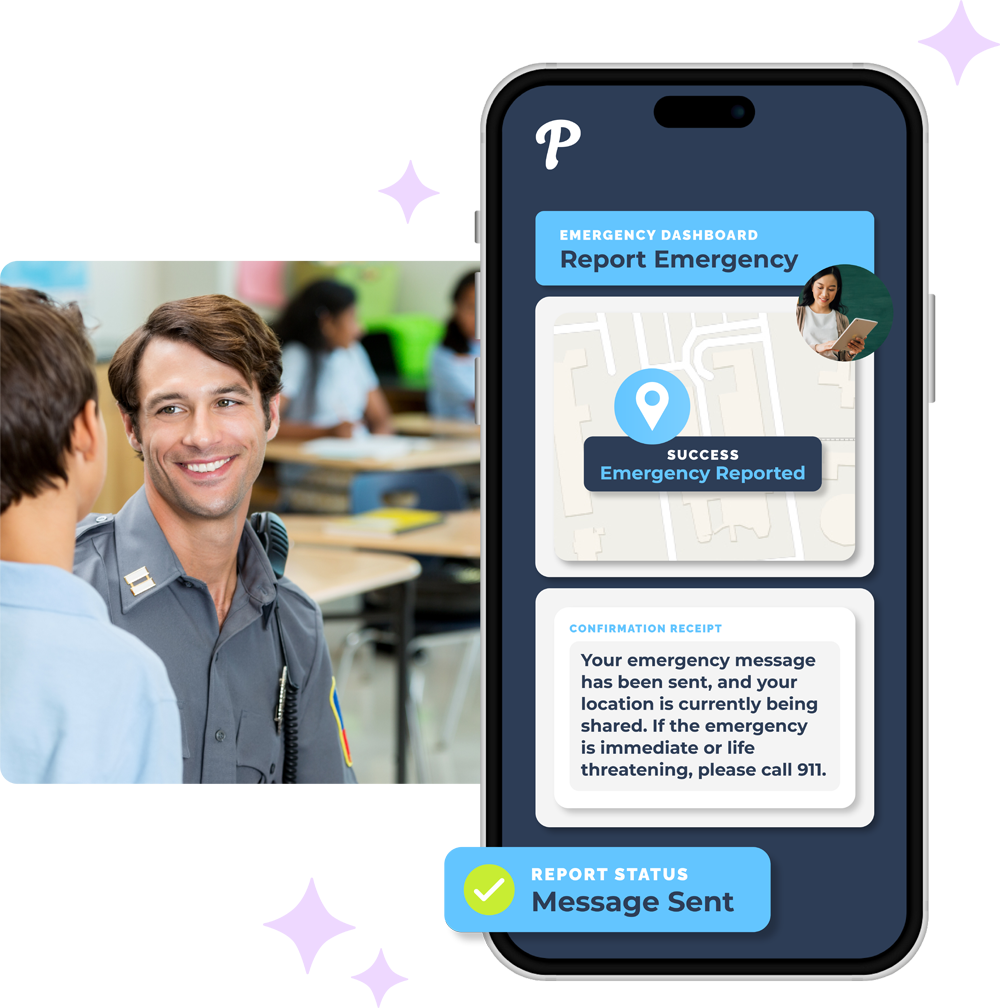Implementing a new digital system in schools requires more than software—it takes planning, training, and consistent support to succeed. When it comes to dismissal apps, successful adoption depends on thoughtful implementation that includes every stakeholder: administrators, staff, and families. Without proper onboarding, even the best systems fail to deliver results. Delays, miscommunication, and confusion arise when users aren’t fully supported. From login issues to unclear roles, the challenges of poor rollout can quickly overwhelm your school community.
That’s why structured training and implementation plans are essential for lasting success. With the right approach, your dismissal app becomes transformative. This blog covers the steps needed to ensure successful school dismissal app implementation—and how to build confidence across your campus.
Why Training Matters in School Technology Adoption
Rolling out school technology requires more than turning on a tool. Training provides the foundation for long-term success with digital dismissal systems. When staff, parents, and administrators understand their roles, the technology works as intended. When they don’t, it quickly breaks down. Structured onboarding creates clarity, reduces fear, and sets the tone for school wide adoption.
Training also builds a culture of tech confidence across your school. That confidence helps drive better results, faster adoption, and fewer errors. Ultimately, investing in training is investing in your people—and that’s how digital transformation sticks.
Training School Staff for a Smooth Dismissal App Rollout
Before introducing a school dismissal app, prepare your staff with a clear, step-by-step training plan. Start with an overview session to explain the “why” behind the system and what benefits it brings. Follow up with interactive workshops where staff simulate real dismissal scenarios using the app. This helps reduce anxiety and builds muscle memory before the system goes live. Assign clear roles—teachers, aides, office staff, traffic managers—all need defined responsibilities for dismissal to run smoothly. Support those roles with quick-reference guides, cheat sheets, and posters to reinforce daily procedures.
Staff onboarding programs should be practical, hands-on, and repeatable for future training cycles.
Teaching Parents How to Use the School Dismissal App
Parents are essential to the success of any digital dismissal tool. When they understand how it works, trust and participation increase. Host informational sessions or short webinars to walk families through setup, daily use, and expectations. Keep these sessions simple, visual, and solution-focused.
Create easy-to-follow video tutorials, email walkthroughs, and app guides tailored for busy parents. Include answers to common concerns like login issues, forgotten pickups, or changing plans. Step-by-step emails with screen captures or animated GIFs help guide new users at their own pace. Clear school-parent communication tools are key to tech adoption and retention.
Troubleshooting Common Dismissal App Issues
Every school technology comes with some friction, especially early on. Prepare your team to troubleshoot quickly and confidently. Common issues include login problems, missed notifications, incorrect pickup data, and GPS errors. Create a simple troubleshooting guide for staff and parents covering how to resolve the most common issues.
Set up a dedicated support channel—whether it’s an email inbox, chat system, or hotline. Having one place to report problems improves resolution time and reduces duplication. Know when to escalate to the vendor’s technical team. A good partner will offer responsive support, especially during onboarding and go-live windows.
Building an Effective Dismissal Workflow for Your School
Technology doesn’t replace your process—it enhances it. Before launching your app, document how dismissal currently works across grades, modes, and staff roles. Use this process map to guide how the app will integrate into your routine. Digital workflow design begins with what’s already working—and fixes what’s not. Assign clear responsibilities for each dismissal phase: classroom call-outs, carline scanning, parent updates, and end-of-day reporting. Use the app’s reporting features to monitor trends, inefficiencies, or communication gaps.
By tracking and improving your workflow, you’ll reduce errors, save time, and build greater family satisfaction.
Defining Staff Roles and Responsibilities in Digital Dismissal
Clarity creates confidence. Make sure every staff member knows exactly what’s expected during digital dismissal. Create and share a role chart for teachers, traffic coordinators, security staff, and administrative leads. Use this chart to define permissions within the app—who views what and who can update data. Role-based access helps prevent errors, protects sensitive information, and supports accountability. To reinforce roles, conduct role-play drills during training.
Run through busy-day scenarios, last-minute changes, or early dismissals. Prepared staff can better adapt in real time—keeping dismissal safe and stress-free.
Onboarding Support: Setting Up for Success
Great onboarding starts before families ever log in. Your system setup and configuration should be handled with care. Work with your vendor to import student and parent data securely. Review data for accuracy before going live. Customize your settings to reflect your school’s policies and pickup procedures. Set up zones, grade-level groupings, and emergency overrides in advance. Test everything in a pilot before full deployment. Involve a small group of staff and families to validate workflows and catch errors. Strong vendor onboarding support can make the difference between adoption and abandonment.
Running Emergency Drills with Your Dismissal App
Emergency preparedness must extend to your digital tools. Run regular drills that use your dismissal app to simulate real-world safety events. Test emergency alerts, geo-fencing, and quick pickup functions. Include your communication team, traffic coordinators, and classroom staff in the drill.
After each drill, hold a debrief to discuss what worked, what didn’t, and how to improve. Drills reinforce readiness and help your team respond faster when it counts. Parents should be informed about drill purposes and timing to reduce confusion. Emergency communication tools are only effective when tested and trusted.
Measuring Dismissal App Adoption Rates
Track usage data to ensure your dismissal system is being fully adopted. Start with app downloads, registration rates, and daily usage across staff and families. Monitor trends: are parents consistently using the app? Are staff entering data correctly? If not, identify where additional training or communication is needed.
Review usage metrics with your team regularly—make it part of staff meetings or leadership check-ins. Celebrate improvements and milestones to reinforce participation. Measuring adoption keeps your system active and evolving. School technology analytics provide insight, accountability, and growth opportunities.
Creating User Manuals and Support Resources
Documentation keeps your system strong long after launch. Create user-friendly manuals with step-by-step screenshots and practical examples. Include a troubleshooting section, FAQs, and quick-reference tips for daily operations. Make sure both staff and parents can access and understand these materials.
Host your guides on your school website or parent portal for easy access. Update content regularly as features change or new use cases emerge. Helpful documentation empowers users to solve small issues on their own—reducing support requests and improving satisfaction.
Updating School Policies to Include Digital Dismissal Systems
Digital systems must be reflected in school policy. Update your handbook to include dismissal app protocols, emergency procedures, and parent expectations. Clarify data privacy, location tracking, and notification policies to align with compliance standards. Communicate these updates through meetings, emails, and family nights. Make sure staff know how to enforce digital processes consistently. Written policies support continuity and reduce liability across your school or district. School policy updates for technology ensure long-term alignment between your goals, tools, and legal requirements.
Laying the Foundation for Long-Term Success
A successful school dismissal app implementation depends on more than technology—it requires training, communication, and shared ownership. With thoughtful planning, hands-on support, and responsive troubleshooting, schools can build a dismissal process that is safe, efficient, and future-ready.
Continuous training and consistent data reviews help maintain momentum beyond launch. When staff and families feel supported, the system thrives.
Your school’s future includes digital solutions—and how you implement them matters more than what platform you choose.
Book an Implementation Consultation Now to make your school’s dismissal smarter, safer, and stronger from day one.



